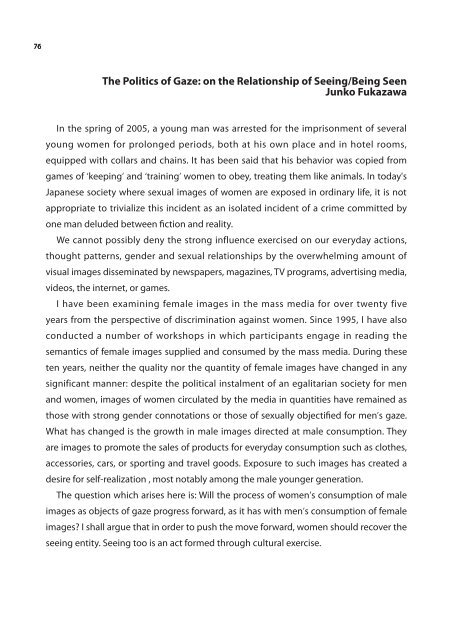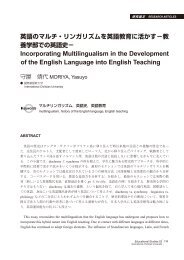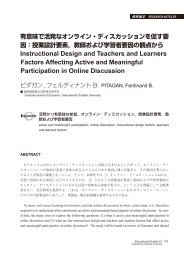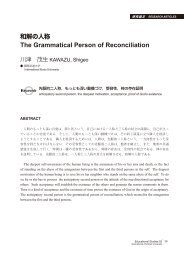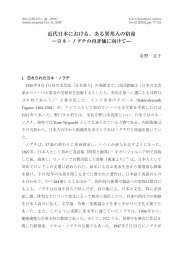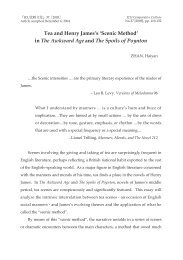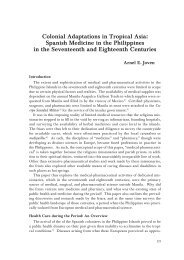Untitled - subsite - å½éåºç£æ大å¦
Untitled - subsite - å½éåºç£æ大å¦
Untitled - subsite - å½éåºç£æ大å¦
You also want an ePaper? Increase the reach of your titles
YUMPU automatically turns print PDFs into web optimized ePapers that Google loves.
76<br />
The Politics of Gaze: on the Relationship of Seeing/Being Seen<br />
Junko Fukazawa<br />
In the spring of 2005, a young man was arrested for the imprisonment of several<br />
young women for prolonged periods, both at his own place and in hotel rooms,<br />
equipped with collars and chains. It has been said that his behavior was copied from<br />
games of keeping and training women to obey, treating them like animals. In today's<br />
Japanese society where sexual images of women are exposed in ordinary life, it is not<br />
appropriate to trivialize this incident as an isolated incident of a crime committed by<br />
one man deluded between fiction and reality.<br />
We cannot possibly deny the strong influence exercised on our everyday actions,<br />
thought patterns, gender and sexual relationships by the overwhelming amount of<br />
visual images disseminated by newspapers, magazines, TV programs, advertising media,<br />
videos, the internet, or games.<br />
I have been examining female images in the mass media for over twenty five<br />
years from the perspective of discrimination against women. Since 1995, I have also<br />
conducted a number of workshops in which participants engage in reading the<br />
semantics of female images supplied and consumed by the mass media. During these<br />
ten years, neither the quality nor the quantity of female images have changed in any<br />
significant manner: despite the political instalment of an egalitarian society for men<br />
and women, images of women circulated by the media in quantities have remained as<br />
those with strong gender connotations or those of sexually objectified for mens gaze.<br />
What has changed is the growth in male images directed at male consumption. They<br />
are images to promote the sales of products for everyday consumption such as clothes,<br />
accessories, cars, or sporting and travel goods. Exposure to such images has created a<br />
desire for self-realization , most notably among the male younger generation.<br />
The question which arises here is: Will the process of womens consumption of male<br />
images as objects of gaze progress forward, as it has with mens consumption of female<br />
images I shall argue that in order to push the move forward, women should recover the<br />
seeing entity. Seeing too is an act formed through cultural exercise.


